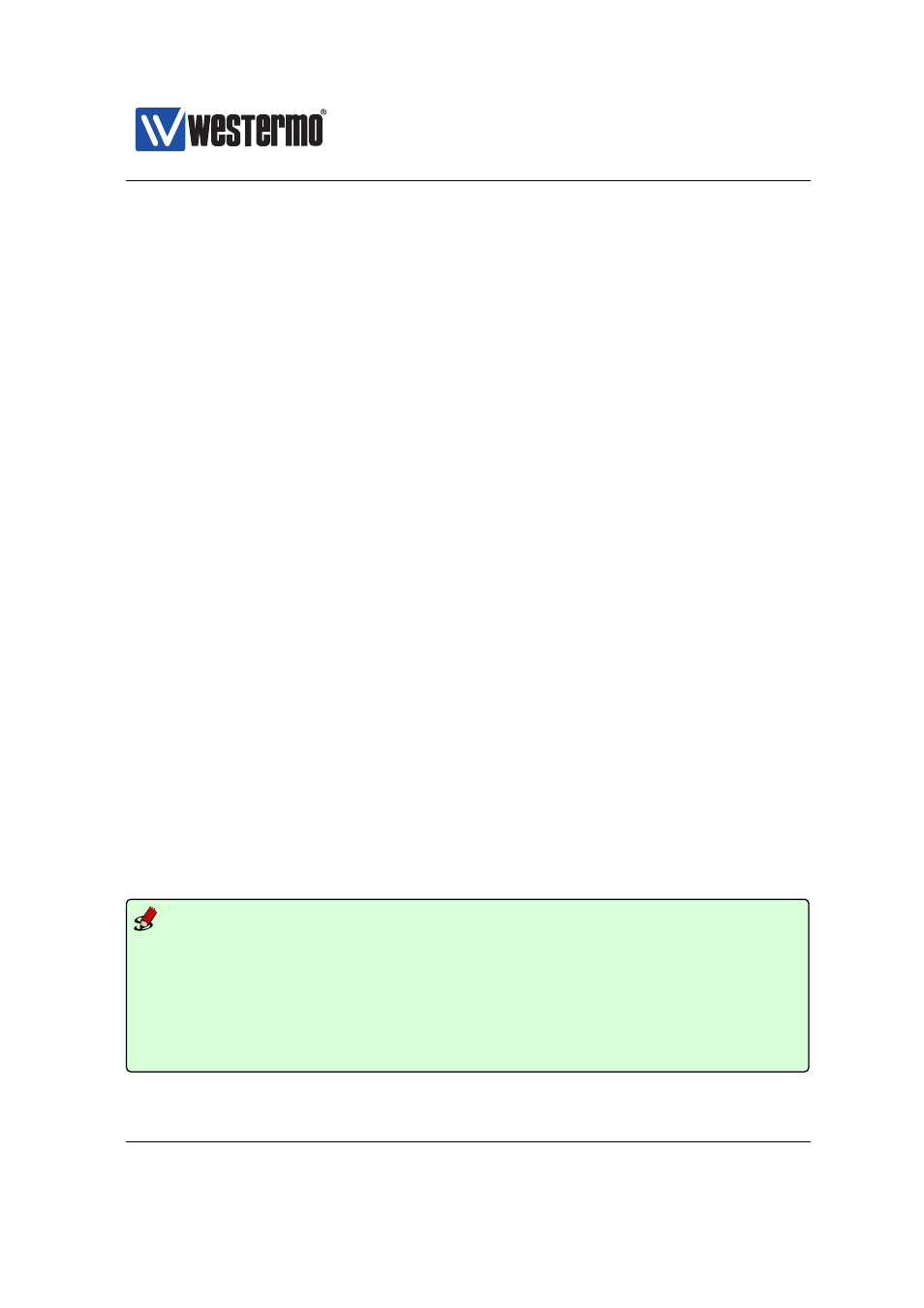Westermo RedFox Series User Manual
Page 607

Westermo OS Management Guide
Version 4.17.0-0
To reduce the routing information going into a stub area even further, it is pos-
sible to prohibit summary routes from other areas to go into a stub area. This
is done by adding the no-summary parameter to the stub command (”stub
no-summary”); this is only needed on the ABR(s) of the stub area.
Such areas are referred to as totally stubby areas.
The cost of the default route being injected into the stub area is by default set to
”1”. The cost value can be configured via the ”default-cost” command within
the area context.
The backbone area cannot be configured as a stub area.
27.1.1.5
Not so stubby areas (NSSAs)
In a stub area, no router can redistribute routing information learnt from exter-
nal sources (static routes, BGP, etc.). That is, a stub area cannot contain an
autonomous system border router (ASBR).
If you wish to have an ASBR in an area, but limit the amount of routing information
to keep track of as in a stub area, OSPF provides an area type known as not so
stubby area (NSSA).
demonstrates a case where NSSAs can be a useful choice. Here we
assume that area 0.0.0.1 and area 0.0.0.2 are preferably defined as stub areas
to avoid that BGP routes (redistributed by the ASBRs in the backbone area) are
propagated into those areas. But area 0.0.0.2 includes a router connected to
a local RIP network. By defining area 0.0.0.2 as a NSSA, the RIP routes can be
redistributed into the OSPF network.
NSSA are created in the same way as a stub area (see
). All
routers in the area must declare the area as NSSA. An example is given below.
Example
router
ospf
router-id 192.168.5.12
network 192.168.5.0/24 area 0.0.0.0
network 192.168.16.0/24 area 0.0.0.2
area 0.0.0.2
nssa
end
end
➞ 2015 Westermo Teleindustri AB
607